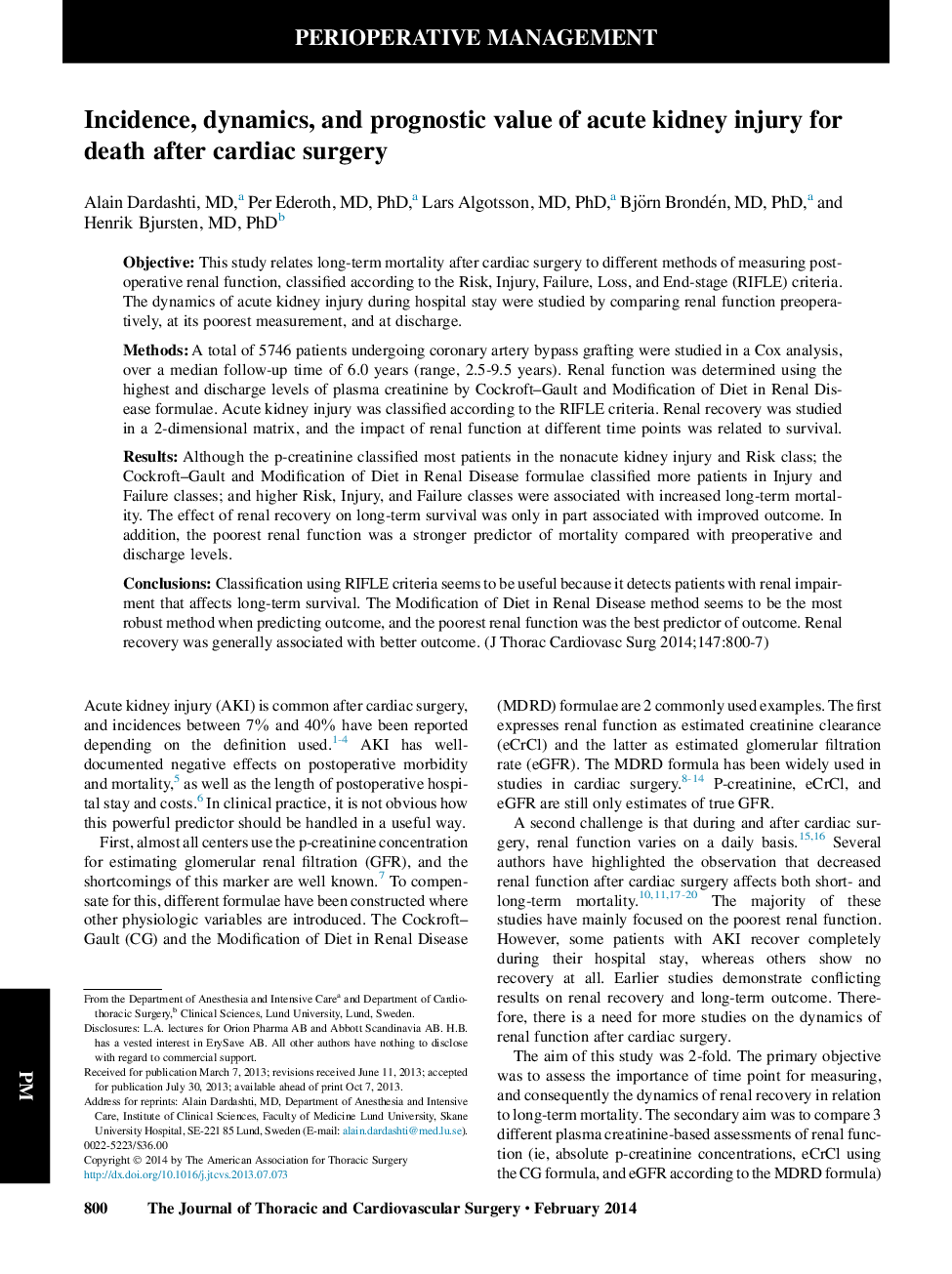| Article ID | Journal | Published Year | Pages | File Type |
|---|---|---|---|---|
| 2980245 | The Journal of Thoracic and Cardiovascular Surgery | 2014 | 8 Pages |
ObjectiveThis study relates long-term mortality after cardiac surgery to different methods of measuring postoperative renal function, classified according to the Risk, Injury, Failure, Loss, and End-stage (RIFLE) criteria. The dynamics of acute kidney injury during hospital stay were studied by comparing renal function preoperatively, at its poorest measurement, and at discharge.MethodsA total of 5746 patients undergoing coronary artery bypass grafting were studied in a Cox analysis, over a median follow-up time of 6.0 years (range, 2.5-9.5 years). Renal function was determined using the highest and discharge levels of plasma creatinine by Cockroft–Gault and Modification of Diet in Renal Disease formulae. Acute kidney injury was classified according to the RIFLE criteria. Renal recovery was studied in a 2-dimensional matrix, and the impact of renal function at different time points was related to survival.ResultsAlthough the p-creatinine classified most patients in the nonacute kidney injury and Risk class; the Cockroft–Gault and Modification of Diet in Renal Disease formulae classified more patients in Injury and Failure classes; and higher Risk, Injury, and Failure classes were associated with increased long-term mortality. The effect of renal recovery on long-term survival was only in part associated with improved outcome. In addition, the poorest renal function was a stronger predictor of mortality compared with preoperative and discharge levels.ConclusionsClassification using RIFLE criteria seems to be useful because it detects patients with renal impairment that affects long-term survival. The Modification of Diet in Renal Disease method seems to be the most robust method when predicting outcome, and the poorest renal function was the best predictor of outcome. Renal recovery was generally associated with better outcome.
